Australia news LIVE More than 200 arrested in Melbourne anti-lockdown protests NSW records six COVID-19 deaths states protest operation deemed a success
1 of 4
With passport applications plummeting due to closed international borders, processing has recently taken as little as two days.
But authorities are warning wait times will increase when Australia’s international borders reopen.
The Passport Office issued just 603,464 passports over the past year, compared with more than 1.7 million in the previous year. The means a large number of Australians have allowed their passports to expire, which could result in long wait times once borders reopen.
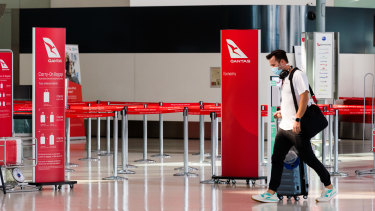
Qantas has scheduled international flights to start from December 18.Credit:James Brickwood
A Department of Foreign Affairs and Trade spokesperson said that wait times are currently short, but applications had been gradually increasing since August.
“Once international borders start to reopen, the department expects there will be high demand for passports,†the spokesperson said.
“Recent experience in the United States and the United Kingdom has shown that there was a significant increase in applications ahead of international travel restrictions being lifted in these countries, resulting in long wait times for passports.â€
Reports from the US put the wait time for processing at up to four and a half months, as Americans look to travel internationally again.
Click here to read the full story.
While a picnic seems like a meagre reward for enduring Sydney’s gruelling lockdown, many in the city rejoiced at the eased restrictions on Saturday, flocking to parks and enjoying one another’s company until the rain came.
New rules came into effect on Monday allowing Sydney residents who do not live in the 12 local government areas of concern to gather outdoors in groups of five.
The five-person limit does not include children under 12, but people must be within their local government area or five kilometres of their home.
Herald photographers on Saturday captured people at Sydney’s parks lapping up the change.
You can view a full gallery by clicking here. There are also some photos below.
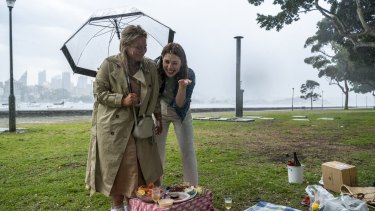
A picnic is disrupted due to heavy rain at Rushcutters Bay.Credit:Rhett Wyman
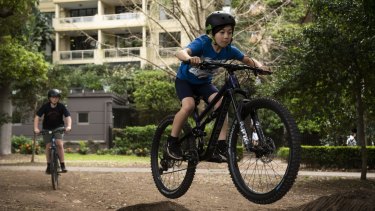
A group of kids having fun jumping their bikes in Rushcutters Bay Park.Credit:Rhett Wyman
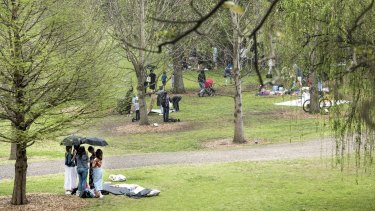
Picnics are packed up as the rain begins to fall at Centennial Park.Credit:Steven Siewert
NSW Police have described a major police operation targeting a planned anti-lockdown protest on Saturday as a success, with “no real protest activity†in metropolitan Sydney.
Across NSW there were 32 people arrested in connection with planned protests, while police issued 265 penalty infringement notices. More than 60,000 vehicles were checked at 19 traffic points on major roads.
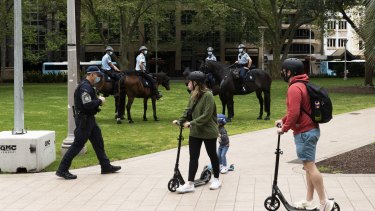
Police patrolling Sydney’s Hyde Park on Saturday. Credit:Rhett Wyman
Police were also stationed on the rail networks where a number of the arrests were made for breaches of the public health order and possession of knives.
More than 1700 police were involved in the operation across the state, of which 1500 were deployed across Sydney. The remainder targeted small protests in regional NSW, including in including Tweed Heads, Byron Bay, Central Coast, Wollongong and on the South Coast.
Assistant Commissioner Peter Thurtell on Saturday said the aim of the operation was to prevent protest activity and to enforce the public health order.
“And if you have a look at today’s results I think you’ll find that our actions have been very professional, very well received by the public.â€
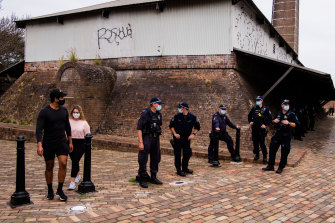
Police at Sydney Park checking IDs at the entrances.Credit:James Brickwood
He said he believed many people who were previously supportive of anti-lockdown protests appeared to have “changed their mind†about participating, following the first large scale protest and police operation on July 24.
“They saw it was not only enforced on the day, but there were follow-up operations to identify those that were in breach not only of the public health order, but more importantly those that assaulted police horses and assaulted police officers,†he said.
“We’ve all been in lockdown for quite some time now and the fact that others are prepared to put that at risk means that we need to enforce the health order.â€
Throughout Saturday’s operation 20 people were arrested in Greater Sydney and 236 PINs were issued. In Byron Bay 11 people were arrested and 28 PINs were issued and one person was arrested and later issued with a PIN in Tweed Heads.
A pub in Yass in regional NSW has been declared a close contact COVID-19 exposure site.
Anyone who attended the Australian Hotel Motel on Comur Street in the town on Saturday, September 11 between 6.45pm and 9.20pm is now considered a close contact.
They must immediately get tested for COVID-19 and quarantine for 14 days from the exposure, regardless of whether they receive a negative result.
NSW health authorities have also identified a number of new casual contact exposure sites, which can be viewed on this list on the state government’s website.
The Yass Valley Council local government area was placed back under stay-at-home restrictions on Tuesday for two weeks after a positive case was confirmed in the area.
Victorian health authorities have identified more than 30 new COVID-19 exposure sites, including The Royal Children’s Hospital in Melbourne and a park in the Macedon Ranges.
The hospital’s main street visitor screening queue was declared a tier-2 or casual contact site on Monday, September 13 between 10.16am and 10.45am.
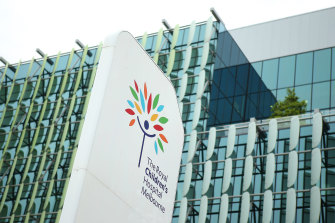
The Royal Children’s Hospital in Melbourne.Credit:Pat Scala
Earlier, a Mercy Health spokesperson confirmed Mercy Hospital for Women in Melbourne was declared a tier-1 or close contact exposure site. The Age understands 120 pregnant women will be forced to isolate as a result.
There is only one new tier-1 site - the Three Little Figs cafe in the city of Geelong, south west of Melbourne - with the remainder of the new sites declared tier 2.
Along with the hospital’s screening queue, they include Woodend Children’s Park in the Macedon Ranges, north west of Melbourne, an office complex at St Kilda in Melbourne’s south east, apartment complexes at Footscray in the city’s west and Docklands in the inner city, and multiple supermarkets.
Authorities warned some people who attended the otherwise casual contact site of Moomba Park Primary School at Fawkner in Melbourne’s north would be identified as close contacts.
A full list of Victorian exposure sites can be found here.
Victoria Police have so far arrested 235 people over Melbourne’s anti-lockdown protest on Saturday.
Commander of the north west metro region Mark Galliott said 193 of those people were arrested for breaching the Chief Health Officer’s directions, and the others were arrested for a range of offences including assaulting police, weapons and drugs offences.
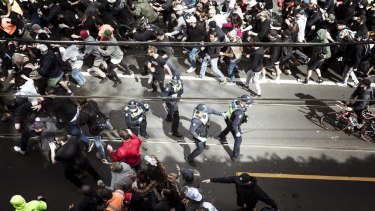
More than 2000 police were deployed in an attempt to thwart Melbourne’s anti-lockdown protests on Saturday.Credit:Chris Hopkins
Commander Galliott said 10 police officers were injured during the protests, and six were hospitalised.
Three officers were still in hospital with a range of injuries, including torn muscles, a broken elbow, broken nose, broken finger, and bruises.
He said protesters threw bottles, stones, and a “range of other objects†at police.
“What we saw today was a group of protesters that came together, not to protest freedoms, but simply to take on and have a fight with the police,†Commander Galliott said.
“That’s what we saw - [they] were angry, aggressive young males there to fight the police, not to protest about freedom.
“What we saw, especially in some instances, was, you know, police getting trampled forcing the lines, police men and women getting trampled, which they do not come to work for - they’re here to help keep the community safe.
“What we don’t come to work for is get trampled, assaulted, and end up going home with broken bones.â€
Commander Galliott said Victoria Police estimated between 500 and 700 protesters turned out for the anti-lockdown rally in Melbourne on Saturday. He said police were anticipating between 6000 and 7000 people would turn up.
All 193 people arrested for breaching the Chief Health Officer’s directions would be fined, Commander Galliott said. He said if police did not shut down the public transport system and enforce vehicle checkpoints on Saturday, “we could have had thousands in the cityâ€.
“We appreciate there was a great disruption to the commuters, to other people at those checkpoints trying to get through to business,†Commander Galliott said.
“But as I said, all we’re simply doing is responding to protester behavior.â€
Commander Galliott said police were yet to put a cost on the operation, but it would have been hundreds of thousands of dollars.
Victoria Police Commander Mark Galliott provided an update on Saturday’s demonstration from 5pm AEST after violent clashes between police and protesters.
You can watch a playback clip below.
The Age’s photographers and journalists were in the thick of it today covering Melbourne’s anti-lockdown protest.
You can click here to see a gallery of photos from the rally. A few photos from the event are also below.
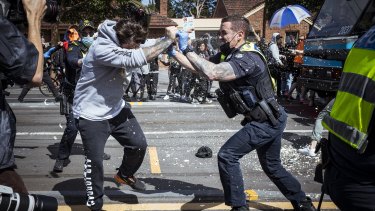
A police officer uses capsicum spray on a protester during Melbourne’s anti-lockdown rally. Credit:Chris Hopkins
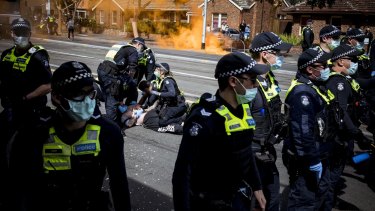
A man is taken to the ground by police as a flare goes off in the background at Melbourne’s anti-lockdown rally.Credit:Chris Hopkins
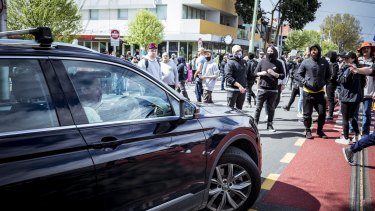
A lady in a vehicle bursts into tears as anti-lockdown protesters stop traffic in Richmond.Credit:Chris Hopkins
A new report shows the world is on a “catastrophic pathway†toward a hotter future unless governments make more ambitious pledges to cut greenhouse gas emissions, the head of the United Nations says.
The UN report, reviewing all the national commitments submitted by signatories of the Paris climate accord until July 30, found that they would result in emissions rising nearly 16 per cent by 2030, compared with 2010 levels.
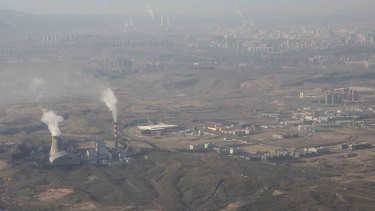
The planet has already warmed by 1.1 degrees since pre-industrial times, experts say.Credit:AP
Scientists say the world must start to sharply curb emissions soon, and add no more to the atmosphere by 2050 than can be absorbed, if it is to meet the most ambitious goal of the Paris accord â€" capping global temperature rise at 1.5 degrees by 2100.
The planet has already warmed by 1.1 degrees since pre-industrial times, experts said
“We need a 45 per cent cut in emissions by 2030 to reach carbon neutrality by mid-century,†UN Secretary-General Antonio Guterres on Friday told a virtual meeting of leaders from major economies hosted by US President Joe Biden.
“The world is on a catastrophic pathway to 2.7 degrees of heating,†he added.
Read the full story here.
Defence troops, emergency volunteers and surf lifesavers could be called on to transport Victorian COVID-19 patients to hospital if the outbreak worsens, as a call went out to staff with no intensive care experience to man critical care beds.
Ambulance Victoria COVID incident management commander Professor Mick Stephenson confirmed to The Age his organisation had recently established a partnership with St John Ambulance and the SES to deliver care to Victorians “if neededâ€, and said it was in talks with Life Saving Victoria, the ADF and Jewish ambulance service Chevra Hatzolah about what support they could provide.
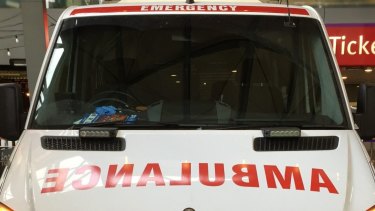
Ambulance Victoria is seeking help to transport COVID patients to hospital, should demand overwhelm the service. Credit:Paul Rovere
“Throughout the pandemic our focus has been on delivering care to Victorians, part of this includes preparing for a variety of scenarios,†he said.
Professor Stephenson said the ambulance service’s emergency plan included arrangements to share the load with state and Commonwealth agencies should case numbers become unmanageable for the service, which was nearing peak capacity months before the outbreak began.
Read the full story here.
1 of 4

0 Response to "Australia news LIVE More than 200 arrested in Melbourne anti-lockdown protests NSW records six COVID-19 deaths states protest operation deemed a success"
Post a Comment